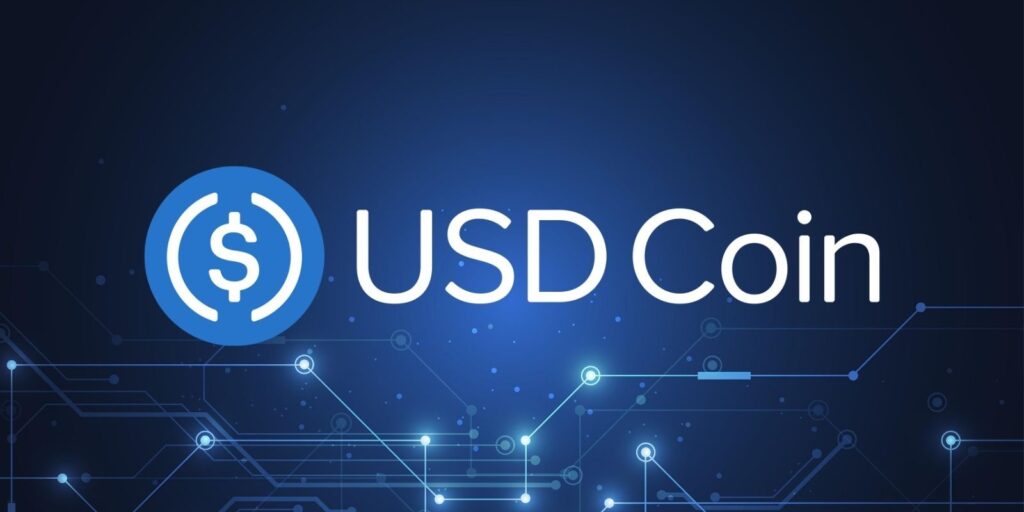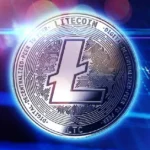USD Coin (USDC) has emerged as a leading stablecoin in the cryptocurrency ecosystem, offering a reliable and transparent alternative to traditional fiat currencies within the digital asset space. Backed by a commitment to regulatory compliance and full reserve backing, USDC has gained widespread adoption since its launch. This article explores the creation of USDC, its governance under the Centre Consortium, and the mechanisms ensuring its peg to the U.S. dollar. It also examines USDC’s pivotal role in trading, decentralized finance (DeFi), and cross-border transactions, while comparing it to other major stablecoins like Tether (USDT). Finally, we analyze its advantages in transparency, regulation, and security, supported by key statistics, notable events, and expert insights.
Creation of USD Coin (USDC)
USDC was introduced in September 2018 as a collaborative effort between Circle, a Boston-based fintech company, and Coinbase, one of the largest cryptocurrency exchanges in the world. The stablecoin was designed to address the growing demand for a trustworthy, dollar-pegged digital asset that could operate seamlessly across blockchain networks. Unlike earlier stablecoins like Tether (USDT), which faced skepticism over its backing, USDC aimed to prioritize transparency and regulatory compliance from the outset.
Built initially on the Ethereum blockchain as an ERC-20 token, USDC has since expanded to multiple blockchains, including Solana, Stellar, Algorand, and Tron, enhancing its interoperability and scalability. The coin’s creators envisioned it as a bridge between traditional finance and the crypto economy, providing a stable medium of exchange and store of value in a volatile market.
Governance by the Centre Consortium
USDC is governed by the Centre Consortium, a partnership co-founded by Circle and Coinbase in 2018. The consortium oversees the issuance, redemption, and operational standards of USDC, ensuring alignment with its mission of creating a stable and interoperable digital currency. Circle acts as the primary issuer, managing the minting and burning of USDC tokens, while Coinbase provides distribution and exchange services.
The Centre Consortium establishes strict guidelines for USDC’s operations, including:
- Reserve Management: USDC is fully backed by a 1:1 reserve of U.S. dollars or high-quality, short-term U.S. Treasury securities held in regulated U.S. financial institutions.
- Audits: Monthly attestations by independent accounting firms, such as Grant Thornton LLP, verify that USDC’s circulating supply matches its reserves.
- Compliance: Adherence to U.S. financial regulations, including anti-money laundering (AML) and know-your-customer (KYC) requirements, distinguishes USDC from less regulated competitors.
In 2023, the Centre Consortium expanded its membership to include additional partners, signaling a push toward broader adoption and decentralized governance, though Circle remains the dominant player in day-to-day operations.
Maintaining the U.S. Dollar Peg
USDC maintains its $1 peg through a straightforward yet rigorously managed mechanism:
- Issuance Process: When users deposit USD with Circle via regulated financial partners (e.g., Silvergate Bank or Signature Bank historically, and others post-2023), an equivalent amount of USDC is minted and issued to the user’s wallet. These funds are held in reserve.
- Redemption Process: When users redeem USDC for USD, the tokens are burned (removed from circulation), and the corresponding fiat is withdrawn from reserves and transferred to the user.
- Reserve Composition: Unlike Tether, which has diversified its reserves into assets like Bitcoin and gold, USDC’s reserves are explicitly limited to cash and cash equivalents, primarily U.S. dollars and short-term U.S. Treasuries. This conservative approach minimizes risk and ensures liquidity.
Monthly attestations consistently confirm that USDC’s reserves match or exceed its circulating supply. For example, as of February 2025, with a circulating supply of approximately 55 billion USDC, Circle reported reserves of $55.2 billion, including $42 billion in cash and $13.2 billion in Treasury securities. This transparency and simplicity have helped USDC maintain its peg with minimal deviation, even during market crises like the 2022 Terra-Luna collapse or the 2023 Silicon Valley Bank failure.
Role in the Crypto Market
USDC plays a critical role in the cryptocurrency ecosystem, bolstered by its stability, regulatory backing, and widespread adoption.
- Trading Liquidity:
USDC is a key trading pair on major exchanges like Coinbase, Binance, and Kraken, enabling traders to move between volatile assets and a stable store of value without exiting to fiat. In 2024, USDC’s 24-hour trading volume regularly exceeded $5 billion, reflecting its importance to market liquidity. - Decentralized Finance (DeFi):
USDC is a cornerstone of DeFi, powering lending, borrowing, and liquidity provision on platforms like Aave, Compound, and Uniswap. Its reliability makes it a preferred collateral asset, with over $10 billion locked in DeFi protocols as of early 2025. On Ethereum alone, USDC accounts for a significant portion of stablecoin liquidity in decentralized exchanges (DEXs). - Cross-Border Transactions:
USDC facilitates fast, low-cost international payments, bypassing traditional banking intermediaries. Businesses and individuals use it for remittances, settlements, and payroll, particularly in regions with unstable currencies. For instance, Stellar-based USDC has been adopted by remittance firms in Africa and Latin America, processing millions of dollars monthly at fees as low as $0.01 per transaction.
Comparison with USDT and Other Stablecoins
USDC competes primarily with Tether (USDT), the largest stablecoin by market cap, and other players like Binance USD (BUSD) and Dai (DAI). Here’s how it stacks up:
- Market Cap and Adoption:
USDT dominates with a $120 billion market cap as of March 2025, dwarfing USDC’s $55 billion. However, USDC has grown rapidly, doubling its supply since 2022, driven by institutional trust and DeFi integration. - Peg Mechanism:
Both USDT and USDC are fiat-backed, but USDT’s reserves include a broader mix of assets (e.g., loans, Bitcoin), while USDC sticks to cash and Treasuries. Dai, by contrast, is algorithmically backed by crypto collateral, introducing higher volatility risk. - Transparency:
USDC’s monthly attestations by reputable firms contrast with USDT’s less frequent and more opaque reporting. USDT faced fines for misleading reserve claims (e.g., $41 million from the CFTC in 2021), while USDC has avoided such penalties. - Regulation:
USDC’s compliance with U.S. regulations gives it an edge over USDT, which operates from Hong Kong and has clashed with regulators. BUSD, issued by Paxos, shares USDC’s regulatory focus but has a smaller footprint after Binance scaled back support in 2023. - Security:
USDC’s conservative reserve strategy and blockchain diversity enhance its resilience. USDT’s centralized control and past liquidity concerns (e.g., the 2019 NYAG lawsuit) raise questions about its security in a crisis.
Advantages: Transparency, Regulation, and Security
- Transparency:
USDC’s regular attestations provide a clear view of its reserves, fostering trust among users and institutions. Unlike USDT, which only began quarterly reporting after legal pressure, USDC has maintained this practice since inception. - Regulation:
Operating under U.S. jurisdiction, USDC aligns with stringent financial laws, making it a preferred choice for regulated entities like banks and payment processors. Its compliance with the EU’s Markets in Crypto-Assets (MiCA) framework, expected to be finalized in 2025, further strengthens its global appeal. - Security:
By limiting reserves to liquid, low-risk assets, USDC reduces the likelihood of a depeg event. Its multi-blockchain support also mitigates risks tied to a single network’s failure, unlike BUSD’s reliance on Binance Smart Chain.
Expert Alex Thorn of Galaxy Digital notes, “USDC’s transparency and regulatory alignment make it the stablecoin of choice for institutions, even if it trails USDT in volume.” Conversely, critics argue its centralized governance under Circle limits its decentralization compared to algorithmic stablecoins like Dai.
Key Statistics and Notable Events
- Market Cap: $55 billion as of March 2025, making it the second-largest stablecoin.
- Circulating Supply: 55 billion USDC tokens, fully backed by $55.2 billion in reserves.
- Daily Volume: Over $5 billion in 24-hour trading volume, per CoinMarketCap.
- Notable Events:
- September 2018: USDC launched by Circle and Coinbase.
- March 2023: Brief depeg to $0.87 during the Silicon Valley Bank collapse, quickly resolved as reserves were redistributed.
- August 2023: Circle announced $1 billion in cash reserves added, boosting confidence post-SVB crisis.
- January 2024: USDC integrated into Visa’s payment network, enabling direct settlements.
Expert Insights and Future Outlook
Experts view USDC as a stablecoin poised for continued growth. Jeremy Allaire, CEO of Circle, has emphasized its role in “digitizing the dollar” for global finance, predicting a $100 billion market cap by 2027. Analysts on X highlight its regulatory edge, with posts noting, “USDC’s audits and compliance give it a leg up as regulators tighten the screws on crypto.”
Challenges remain, including competition from USDT’s entrenched dominance and emerging stablecoins like PayPal’s PYUSD. However, USDC’s focus on institutional adoption—evidenced by partnerships with Visa, Mastercard, and BlackRock—positions it well for mainstream integration. Its ability to navigate regulatory shifts, such as MiCA, will be key to sustaining its momentum.


